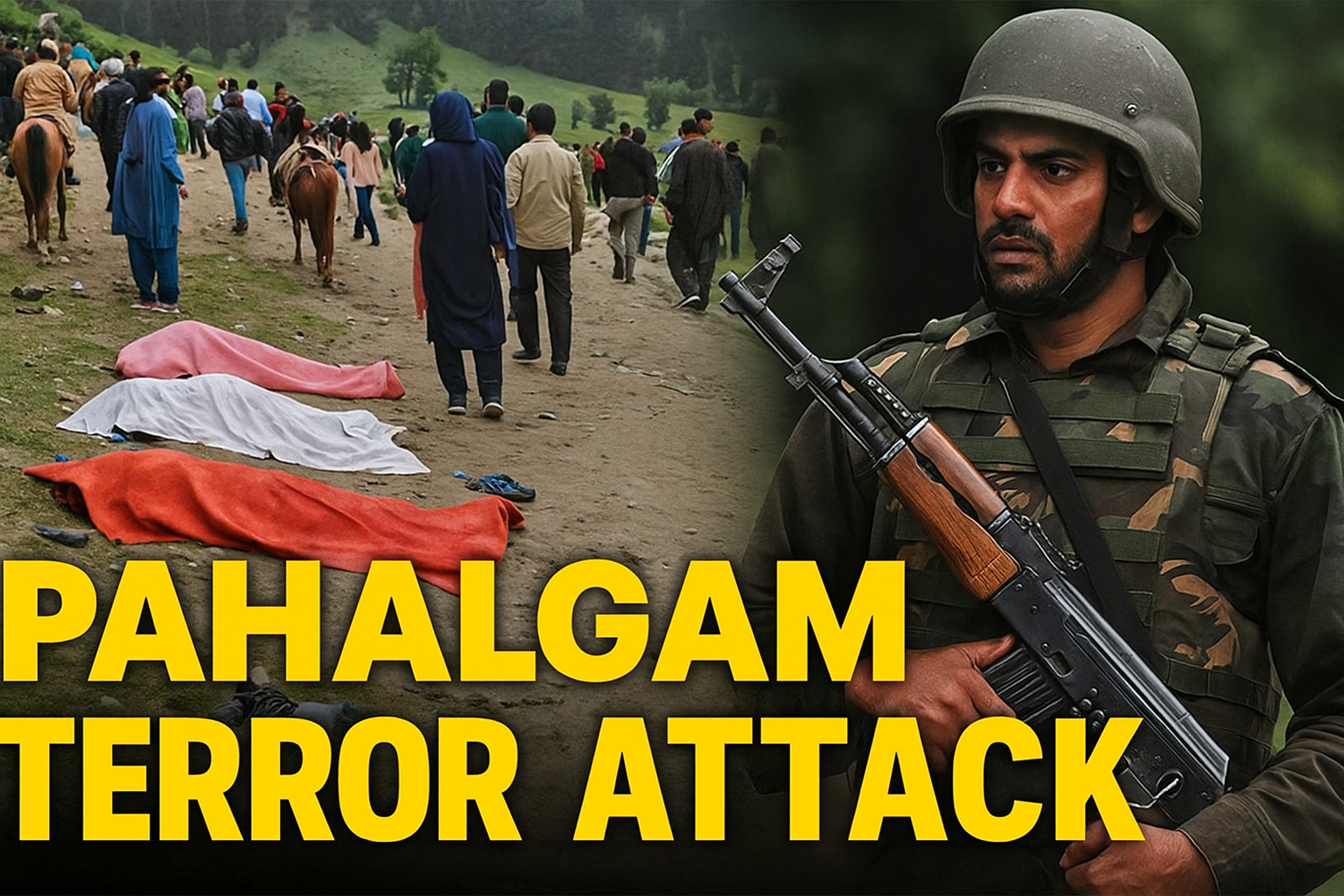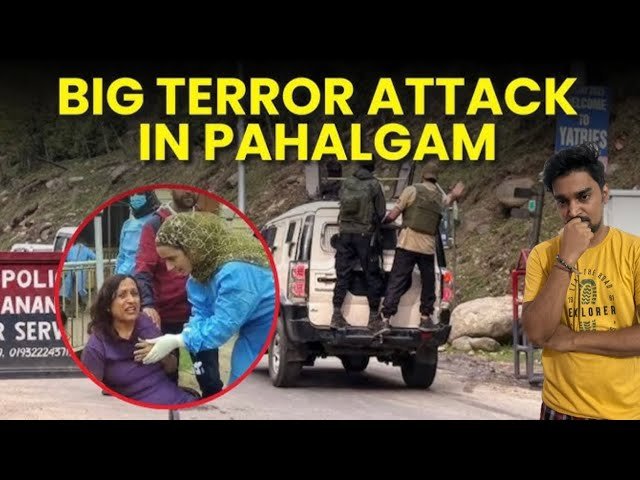Rajnath Singh, The serene valleys of Pahalgam, known for their breathtaking beauty and peaceful vibes, were turned into a battleground of horror on April 22, 2025. A deadly terror strike on tourists in Baisaran meadow left at least 26 innocent lives lost. The Resistance Front (TRF), an offshoot of the notorious Lashkar-e-Taiba (LeT), didn’t just claim the attack—they orchestrated it with chilling precision.
So, who was behind this monstrous act? How did it unfold? And what did leaders like Rajnath Singh say in its aftermath? Let’s unpack the entire situation, piece by piece.
The Face Behind the Plot: Who is Saifullah Kasuri?
Let’s start at the top. The alleged mastermind behind this gruesome attack is Saifullah Kasuri, also known by the alias Khalid. He’s not just another name in the terror underworld—he’s a senior commander of LeT, deeply embedded within its hierarchy. Kasuri is reported to be a close aide of LeT founder Hafiz Saeed and is known to operate from LeT’s Peshawar headquarters, where he also helms its political front, the Milli Muslim League (MML).
Back in 2017, he even went so far as to host a press conference announcing the launch of MML—an attempt to paint LeT with a political brush. The U.S. Treasury has already flagged him for his activities and he’s on the UN’s sanctions list under the 1267/1988 framework. His hands are deep in both ideology and logistics.
The Resistance Front (TRF): What’s Their Deal?
Formed in the wake of Article 370’s abrogation, the TRF was a classic PR move by Pakistani handlers to make militancy appear “homegrown.” But let’s not be fooled. TRF is just LeT with a new coat of paint.
Here’s what makes TRF especially dangerous:
-
Recruits youth via encrypted online platforms.
-
Conducts infiltrations and arms smuggling from across the border.
-
Uses a secular-sounding name to hide its Pakistani backing.
-
Has been declared a terrorist organization under India’s Unlawful Activities Prevention Act (UAPA).
Their operational blueprint is sharp, and the players involved are anything but random.
TRF’s Key Leaders and Killings
Two names you need to know when talking about TRF’s leadership: Sheikh Sajjad Gul and Basit Ahmed Dar. Sajjad Gul pulls the strings as TRF’s supreme commander, while Dar initially served as its operational chief.
TRF’s record sheet is soaked in blood:
-
October 2024: Attack in Ganderbal targeting non-local laborers and a doctor.
-
Throughout 2022: Majority of the militants neutralized in the region were TRF members, according to J&K Police.
Who is Asif Fauji? The Man on the Ground
The execution of the Pahalgam massacre wasn’t done by amateurs. Intelligence points to Asif Fauji, a TRF field operative, as the one who led the strike on the ground. He wasn’t alone—Suleman Shah and Abu Talha joined him in unleashing terror.
Fauji is known in militant circles for his combat skills, tactical planning, and ability to blend in with the civilian population.
How Did the Pahalgam Attack Happen?
The attack wasn’t impulsive. It was months in the making, and every step was calculated:
-
Infiltration: The terrorists crossed over just days before the attack.
-
Disguise: Dressed in a mix of camouflage and local attire to avoid detection.
-
Firepower: They used AK-47s, military-grade weapons, and encrypted comms gear.
-
Execution: Tourists were caught off-guard in Baisaran meadow—a soft target with minimal security.
-
Support network: Digital trails lead back to safe houses in Muzaffarabad and Karachi, hinting at Pakistan’s deep-rooted involvement.
Signals from Pakistan: The Green Light
Here’s where things get even more disturbing. Just days before the attack, a series of public statements and rallies in Pakistan seemed to pave the way.
-
April 16: Pakistan’s Army Chief Asim Munir revived the Two-Nation Theory, stirring religious sentiments.
-
April 18: LeT’s Abu Musa spoke in Rawalkot, PoK, openly calling for “jihad and bloodshed” in Kashmir.
These weren’t isolated incidents. Indian intelligence suspects they were green signals for TRF operatives to proceed with their mission.
What Did Rajnath Singh Say? The Government’s Stance
India’s Defence Minister, Rajnath Singh, wasted no time condemning the attack. In a strongly worded statement, he said:
“India will not sit silent. Every drop of blood spilled in Pahalgam will be avenged.”
He also emphasized that Pakistan’s complicity is evident and that India will take every measure necessary to ensure national security and strike back at terrorism.
This isn’t just rhetoric. The Indian Army has already beefed up its presence in the region, while Intelligence Bureau (IB) officers are working round the clock to track down every last link.
Why This Attack Is a Turning Point
This isn’t just another terror incident—it’s being called the worst since the abrogation of Article 370. The symbolic location, the timing, and the choice of targets (innocent tourists) point to one clear goal: destabilizing Kashmir, wrecking its tourism-driven economy, and creating international headlines.
But India isn’t bowing down.
The Role of IB Officers and Ongoing Investigations
While the army secures the borders, IB officers are digging deep into the digital footprints left behind. Early analysis reveals communication between operatives and handlers in Karachi and Muzaffarabad. Surveillance footage, call records, and encrypted app logs are helping piece together the route of infiltration and operational planning.
What’s Next? The Road Ahead for India
With the world watching, India’s next moves are crucial. Diplomatic pressure on Pakistan is mounting. Cross-border raids, sanctions, and surgical strikes are being considered.
And most importantly, voices from within Kashmir are rising too. Local leaders, including several Muslim clerics, have condemned the killings—proving once again that terrorism has no religion.
Conclusion
The Pahalgam terror attack may have shocked the nation, but it has also united India in rage, grief, and resolve. As more intel comes in and agencies close in on the perpetrators, one thing is clear: terrorists and their backers will face consequences.
Leaders like Rajnath Singh have made it crystal clear—India will not forgive, and it will never forget.
Read More: Arjun S/O Vyjayanthi Movie Review: A Mass Action Flick With A Mixed Bag Of Surprises
Final Thoughts
We must stay informed, stay united, and never let fear dictate our lives. Because the moment we give in to terror, we lose not just lives, but the very essence of our freedom. The fight against terrorism isn’t just a government duty—it’s a national mission. And it starts with awareness.






